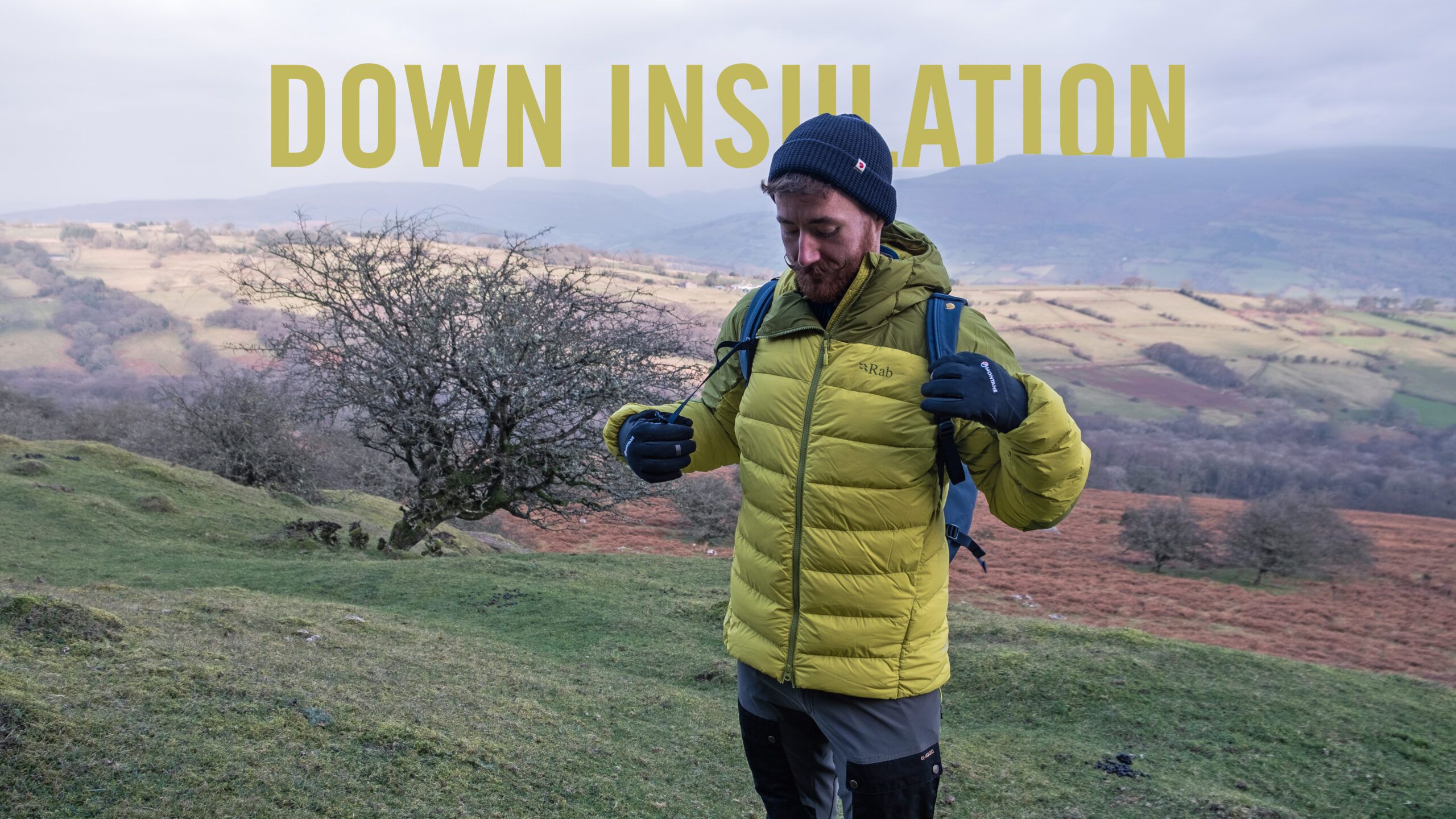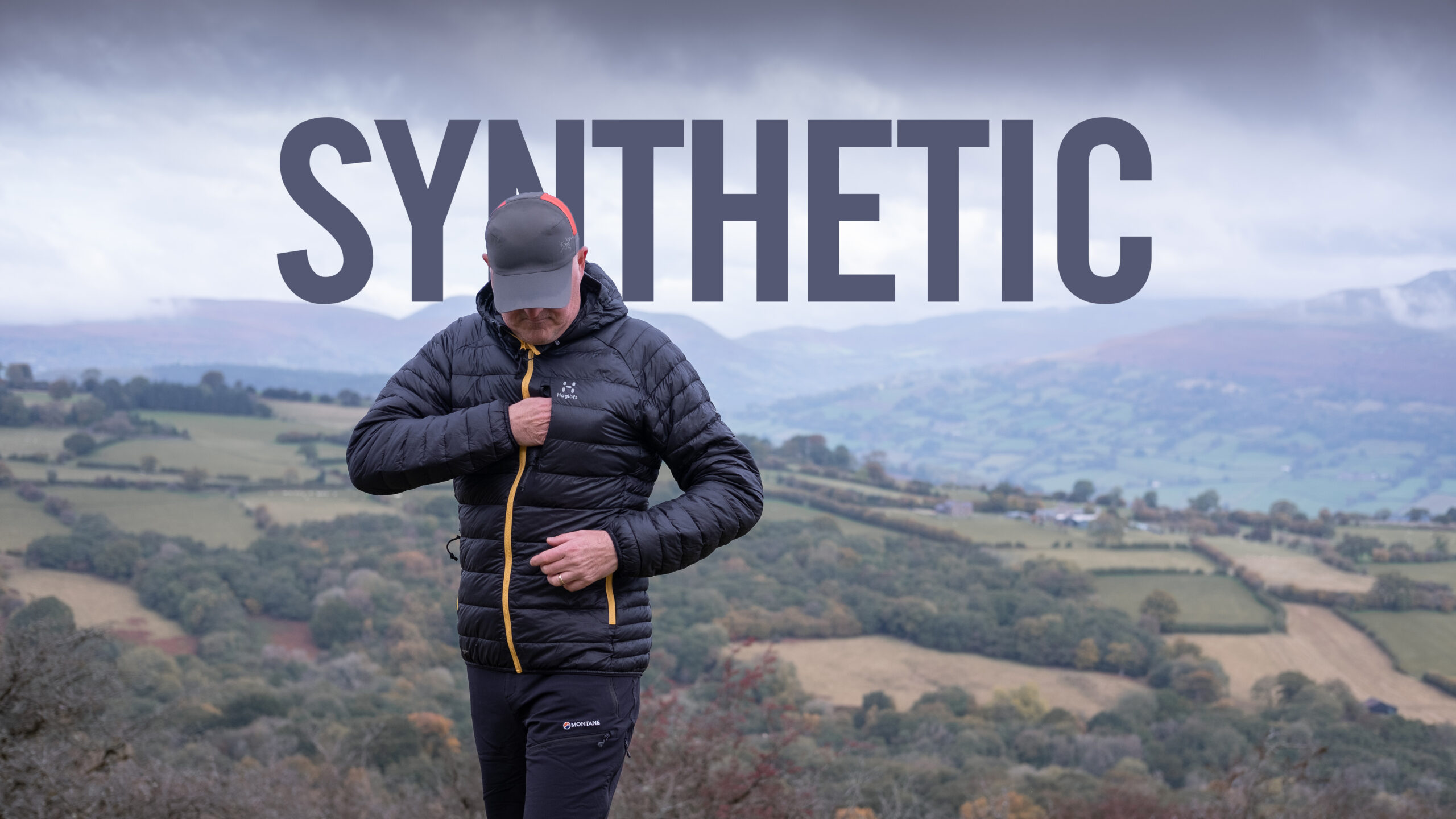Winter is comming: What’s the best insulation?
As I write this, the cold mornings are rolling in and the threat of winter is lingering. Now’s the time we all start looking at a new insulating jacket to keep us toasty on those really cold days. You may already have a preference or you may not even have a clue where to start. Down vs Synthetic – Will help you decide.

Down vs Synthetic: Understanding the Differences and Benefits of Each
Down clusters usually come from ducks or geese and is the fluffy plumage found on the underbellies of the birds. It’s the stuff that comes packed into those expensive duvets that weigh the same as a small mountain. Don’t get down confused with feathers, though. Feathers act as the waterproof membrane to the bird, while the down acts as the insulator. Very few manmade fabrics can replicate the superior warmth that down offers compared to its weight and pack size.
Down is also available in a range of different qualities (represented by ‘fill power’) that allow you to purchase based on your budget and unique requirements.
Down Insulation Pros
- Ounce for ounce, down is warmer than nearly all synthetic insulation types
- Different qualities available for different price points
- With proper care, it can last for decades
- Highly compressible
- Lightweight
Down Insulation Cons
- Down will lose most of its thermal efficiency when wet. Many brands are combatting this with hydrophobic coatings, but it isn’t something to rely on.
- It requires more care to wash. We have a blog with detailed instructions here.
- Down products are typically more expensive than synthetic products.
- Down is not hypoallergenic. The down may not cause an allergic reaction itself, lower quality down can harbour dust particles, debris or other non-down materials, causing a reaction in sensitive people. However, high-quality down is cleaned very well according to strict industry standards and is less likely to cause an issue. If you’re prone to allergies, invest in only high-quality down products, or go with synthetic.
Where is down most effective?
Down really excels in cold, dry conditions. It’s also a brilliant choice if you’re looking for the lightest, most packable product available for your chosen activity.
There are hundreds of different types of synthetic insulation on the market today.
Synthetic insulation is polyester threading moulded into long, single threads or short staples to mimic down clusters.
Many different technologies fall into this category, but the end results are all fairly similar.
An insulating layer designed to replicate the qualities of down, but retain them even when wet.
Down vs Synthetic: Synthetic Insulation Pros
- Retains most of its warmth when it gets wet and when it does get wet, it dries much faster than untreated down.
- If you’re on a budget, synthetic insulation is usually cheaper.
- Simple to wash.
- Most synthetics are also completely hypoallergenic.
Down vs Synthetic: Synthetic Insulation Cons
- Typically heavier and bulkier than down, which also means that it requires more weight and volume to keep you warm and comfortable.
- Synthetic fibres will lose their lofting capabilities quicker than high quality down products.
- They don’t feel as ‘nice’. This may seem small, but psychology plays a huge part in our decision in choosing a garment. Down products just feel cosier.
Where is synthetic insulation most effective?
Pretty much everywhere, but it especially excels when you’re not quite sure what the weather is going to throw at you. If you’ve spent much time in our UK mountains, you’ll know the weather changes almost instantaneously. A synthetic garment will deal with a quick shower far more effectively. It will also resist sweat pretty well, but if you’re sweating so much that your jacket is becoming waterlogged, I’d take off a few layers.
Down vs Synthetic: Which one is better?
Unfortunately, that one’s up to you to decide. You should carefully consider a product that’s going to fit your activities and your lifestyle most effectively. If you’re after a simple, do-it-all workhorse of a jacket, synthetic is probably the way to go. If you want the warmest, lightest, most packable kit available and don’t mind the added complexities, down is the one for you.
Hopefully, that helps in your decision-making process! If you need any help with your insulation questions or queries, feel free to contact our customer service team—drop them a message on [email protected] or call 01432 263 335
We hope you enjoyed reading our blog and that the battle- Down vs Synthetic is over. Why not dive into another blog like: Understanding Waterproof and Breathability Ratings

Leave a Reply